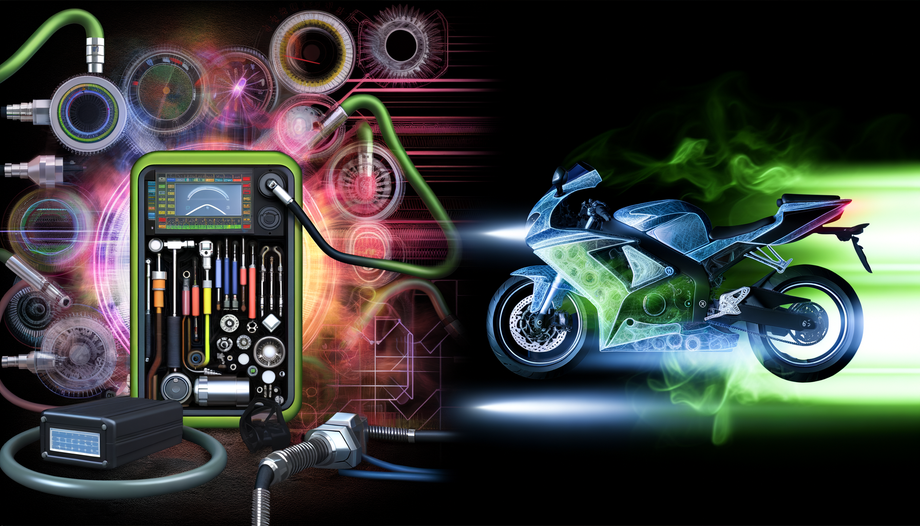The roar of a motorcycle engine, the sense of freedom on two wheels, and the unmatched thrill of riding through open roads make motorcycles more than just a mode of transportation. However, as exhilarating as these machines are, they are increasingly under the scrutiny of stringent emissions regulations. As global environmental concerns rise, regulatory bodies have ramped up the pressure on manufacturers to comply with emissions standards, ensuring that motorcycles contribute to a sustainable future.
For motorcycle manufacturers and enthusiasts alike, these changes bring both challenges and opportunities. While the industry faces increased compliance demands, the need for innovative solutions, such as advanced diagnostic tools, becomes all the more critical.
Understanding the Impact of Emissions Regulations
Emissions regulations are policies set by government bodies aimed at reducing the amount of pollutants emitted from vehicles. Motorcycles, due to their smaller engines and often older technology, have been targeted to meet higher standards akin to their four-wheeled counterparts.
Key Impacts of Emissions Regulations:
- Innovation in Motorcycle Design: Manufacturers must develop new technologies to meet emissions standards. These innovations include cleaner-burning engines, more efficient fuel systems, and electronic controls to optimize fuel usage.
- Increased Manufacturing Costs: Adjusting to these standards often means higher production costs, which can translate to increased prices for consumers.
- Emphasis on Regular Maintenance: Keeping motorcycles within emissions standards requires regular tune-ups and the use of diagnostic tools to ensure compliance.
Diagnostic Tools: A Game Changer for Compliance
Motorcycle diagnostic tools have emerged as essential in the push for emissions compliance. These devices read data from a bike's engine and emission system, providing valuable insights into performance and potential issues.
Benefits of Diagnostic Tools:
- Early Detection of Problems: By identifying issues early, riders can prevent costly repairs and reduce the risk of high emissions.
- Efficiency Optimization: Diagnostic tools help tune the engine for optimal performance, ensuring it runs efficiently and within emission limits.
- Regulatory Compliance Verification: These tools verify that the motorcycle meets the required emissions standards, avoiding penalties or fines.
Incorporating diagnostic tools into regular motorcycle maintenance not only helps individuals but also encourages manufacturers to innovate and produce cleaner, more efficient machines.
Key Players in the Diagnostic Tool Market
As the demand for diagnostic tools grows, several key players have emerged, each offering unique tools to aid in emissions compliance:
- Bosch: A leader in the market, Bosch offers plug-and-play diagnostic tools that connect easily with motorcycle systems to deliver comprehensive insights.
- OBDStar: Known for its user-friendly interface, OBDStar offers tools that allow users to read and clear diagnostic trouble codes easily.
- Texa: An innovator in vehicle diagnostics, Texa provides a range of multicategory tools suitable for motorcycles, supporting an array of makes and models.
Beyond Compliance: The Future Outlook
Moving forward, the relationship between motorcycles and diagnostic tools is bound to deepen. As technology advances, so will the capabilities of diagnostic systems, presenting novel developments that will:
- Integrate with smart devices for real-time data monitoring.
- Offer predictive analytics to anticipate and address potential issues before they arise.
- Provide riders with customized feedback to improve riding habits, contributing to reduced emissions.
Manufacturers that embrace these tools not only secure compliance but also carve a niche in sustainable innovation, appealing to environmentally conscious consumers.
Conclusion: Riding into a Sustainable Future
The challenge of stringent emissions regulations has opened new opportunities for those in the motorcycle industry. By leveraging advanced diagnostic tools, manufacturers can meet compliance requirements, innovate their offerings, and set the stage for a cleaner, more sustainable future for riding enthusiasts.
While regulatory demands are inevitable, they serve as a catalyst for change, pushing the industry towards greater responsibility and technological advancement. As motorcycle enthusiasts, embracing these changes not only enhances our riding experiences but also ensures that the joy of riding endures for generations to come.
Together, we can pave the way toward an eco-friendly future, one diagnostic tool at a time.
Explore Comprehensive Market Analysis of Motorcycle Diagnostic Tool Market
SOURCE -- @360iResearch

